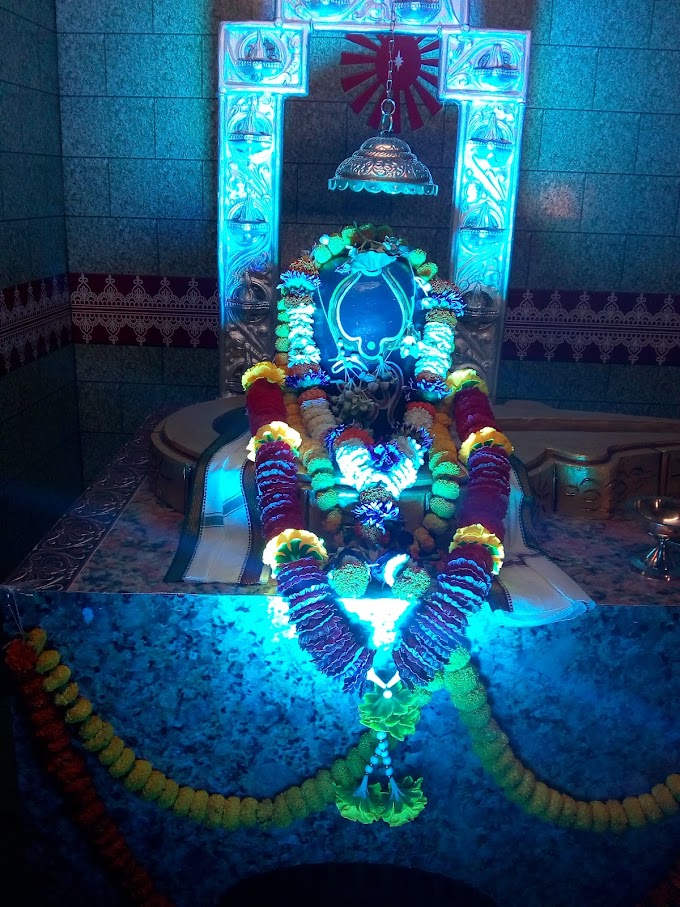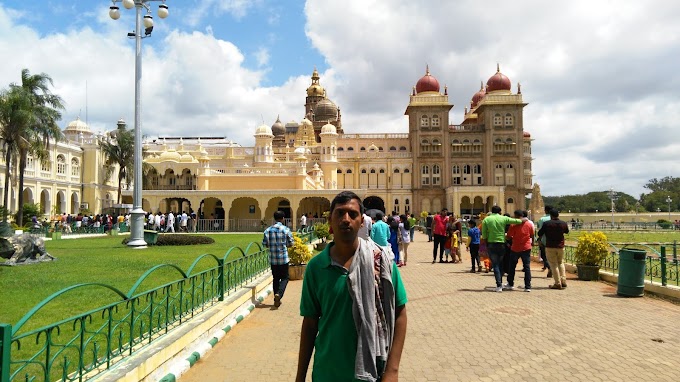Atma Shuddhi is the important
issues for the human (Manushya) to get Mokshya. The word Atma Shuddhi is a
Sanskrit terms which means self purification. Atma Shuddhi is a process of separation and cleanness of soul.
ĀTMA
(soul): The word ‘ātma’ (ātman’), depending on the context, means part or
vehicle of individual (bound) soul. The
Lingayats believe that the soul, being uncreated, is a spiritual substance,
having neither the perceptible qualities like, colour, smell, etc. nor spatial
qualities. In its original, natural state, it is an inseparable part of
Paraśiva (individual soul) and pure bliss. In its bound state, because of
ignorance the individual thinks that he is separate from Paraśiva (individual
soul). Being aided by instruments like senses, mind, intellect, etc. He is
engaged in all kinds of activates, most of which only strengthen his bond to
the world of pain and suffering. Though the ātma and Paramātma have different ontological statuses and
functions, they are in essence identical and therefore, can unite with each
other indistinguishably, as in final liberation. Water can unite with water,
oil with oil, because they are substantially identical. Water and oil cannot
unite because they are substantially different. Just as the different ornaments
made of the same substance, gold, when melted will again become gold, so also
the individual souls when they undergo spiritual training leading to liberation
become pure like, and merge in, Paraśiva.
“It
is wrong to be dependent on the body-complex. One should depend only on the
Soul.” ― Dada Bhagwan
You
may know that with the Ayurvedic body types, there is the concept of your
original constitution (prakruti(nature), the constitution from the moment of
conception). From that moment, environmental factors, hereditary
factors and imbalances from our parents, emotional factors, and
psychological factors start to build up.
You
are lead from the gross sensory experience to the root cause of attachment in
this world- the ego, which is represented in the form or mandala of 'Papa
Purusha', the sinful man, represented as a hideous dwarf living in the abdomen.
By the use of the tattwa bija mantras and breath, you mentally purify, dissolve
and reconstruct his being inside you into a golden egg, like hiranyagarbha.
This actually helps transform your own individual ego. Then, by considering
yourself to be the supreme knowledge or consciousness (Shiva), you finally
attain that state.
The
preliminary activities for external worship are means of creating purity or
suddhi in all aspects relating to the deity: place, articles, self, mind,
mantra,and murti. These are known as sat suddhi (six purities). All the
preparatory elements of puja may fall under one of these headings. The
purification takes place in two stages, physical and spiritual.
The
mind is the most important element in regards to the worshipper. If this is
impure, then all other forms of purification become insignificant. All the
other types of purification are actually assistants to purification of mind.
This purification is enhanced by pranayama, and final spiritualization occurs
by dhyana and manasa puja.
Next,
visualize the kundalini awakening and traveling upward until it reaches the svadhishthana
chakra, the abode of the water element, just above the root of the genitals.
There, visualize an ocean-blue circle with a white crescent moon in the center.
The circle is surrounded by six petals. While you maintain this image, mentally
repeat the bija mantra of the water element, “vam,” not less than sixteen
times.
Keep
one goal only and that is ‘to know the Self ’. Do not be insistent about ‘I
want to do this and do that’. Whatever happens, at whatever time, is correct.”
― Dada Bhagwan tags: atma, goal, i, i-want, insist, know-the-self,
know-thy-self, know-your-self, knowledge-of-self, knowledge-of-the-self, self,
self-realization, self-realization, soul, spiritual, spiritual-quotes, who-am-i
Since
corruption spreads by touch, one should be careful not to mix used articles
with unused articles, or to touch offered items to unoffered items. One should
be careful to see that while offering an article during aratrika, offered
water, flowers, ghee etc. do not fall upon the unoffered upacaras. Thus a
thorough knowledge of what is pure and impure and how to attain and maintain
physical purity of items is requirement to performing deity worship.
The
type of bhuta shuddhi practice just described comes from kundalini yoga. Its
purpose is to help you make a smooth transition from general yoga practices to
more advanced disciplines. Generally this process takes place only in the
imagination or thought, but when a competent master bestow shaktipata (the
direct transmission of spiritual energy), then the kundalini is actually
awakened and bhuta shuddhi becomes a living experience. The student who
receives shaktipata transcends all sense of solidity and weight as the
kundalini rises above the muladhara center, and at the same time such a student
also attains freedom from fear of death, insecurity, and anxiety. When the
kundalini rises above the ajña chakra all thoughts vanish, and the mind is left
behind. What remains is only the awareness of pure consciousness.
“The
one whose egoism is gone, he becomes God. One is a mortal (jivatma) as long as
there is egoism and if his egoism goes away, he becomes the eternal Absolute
Supreme Soul (Paramatma).” ― Dada Bhagwan
that the corruption spreads by touch, the
worshipper must be careful to avoid touching impure items such as the holes of
the body, hair, the lower part of the body, the cloth covering the lower body,
feet, floor, or any impure item (stool, urine, blood, fat, marrow, bone, tears,
ear wax, phelgm etc). Offered articles are considered impure for one who is going
to offer fresh articles. Therefore the worshiper must be careful to avoid
touching offered items. Before touching an unoffered item he should wash his
hands. The water used to wash hands should not be thrown in such a way to
contaminate other objects. The left hand, considered impure, should not touch
the deity.
“Creation
means birth of Atma as seen in the seventh plane, i.e. life-power is
transformed into Atma. Preservation is that when Atma holds the Universe within
Him. Destruction is that condition when Atma turns into the Absolute.” ― Sri
Jibankrishna
Close
the right nostril and inhale through the left while mentally repeating “vam,”
the bija mantra of nectar (also the seed mantra of water), sixteen times. After
completing the inhalation, retain the breath and concentrate on the ajña
chakra, feeling the nectar showering from this chakra in the form of all the
mantras you have employed (they carry the subtle power of the divine force),
and filling your body. During retention, repeat the mantra “vam” sixty-four
times. Then exhale through the right nostril, repeating the mantra thirty-two
times. When you have finished these three cycles of pranayama, let your
consciousness descend toward the lower chakras. Remember, the kundalini shakti
has swallowed all the elements, energies, and issues associated with each of
the chakras as it traveled upward. Now, as it travels downward, those elements
and energies re-emerge, purified by the kundalini shakti. The mind is left at
the ajña chakra; the space element is left at the throat; individual
consciousness and the air element return to the heart; the fire returns to the
navel center; water returns to the pelvic center; and the earth element returns
to the base of the spine. Finally, the kundalini shakti rests again at the
muladhara chakra.
The
Hindu Mythology discusses the attributes of a true seeker of
self. True seekers are those who are engaged in gaining self-realization. They
are called Atmarthi, which literally means one who seeks well being of his
soul. A true seeker seeks out a true guru and obeys his commands. He calms
down his passions, aspires for liberation and has compassion for all living
beings.
The
first step towards this is purification of the basic physical, mental, psychic
and panic structure. In yoga there are various forms of purification which are
meant to achieve this: prana shuddhi, nadi shuddhi, vak shuddhi, manas shuddhi,
etc., but the practice of bhuta shuddhi, as described in the ancient tantras,
covers the entire range of man's existence.
According to the scriptures, attaining a direct
experience of pure consciousness takes a long time. Shaktipata—the direct
transmission from master to student—is the quickest and surest way. However, it
is better to practice bhuta shuddhi sincerely and to your fullest capacity than
to wait passively for a realized master to bestow shaktipata. Such masters are
rare, and even if an aspirant finds one, few students are prepared to receive
such a high degree of initiation. Self-effort is the force that draws divine
grace and moves the guru spirit to light the spark that may result in
shaktipata.
Jyotirmaya
Prasad Behera











